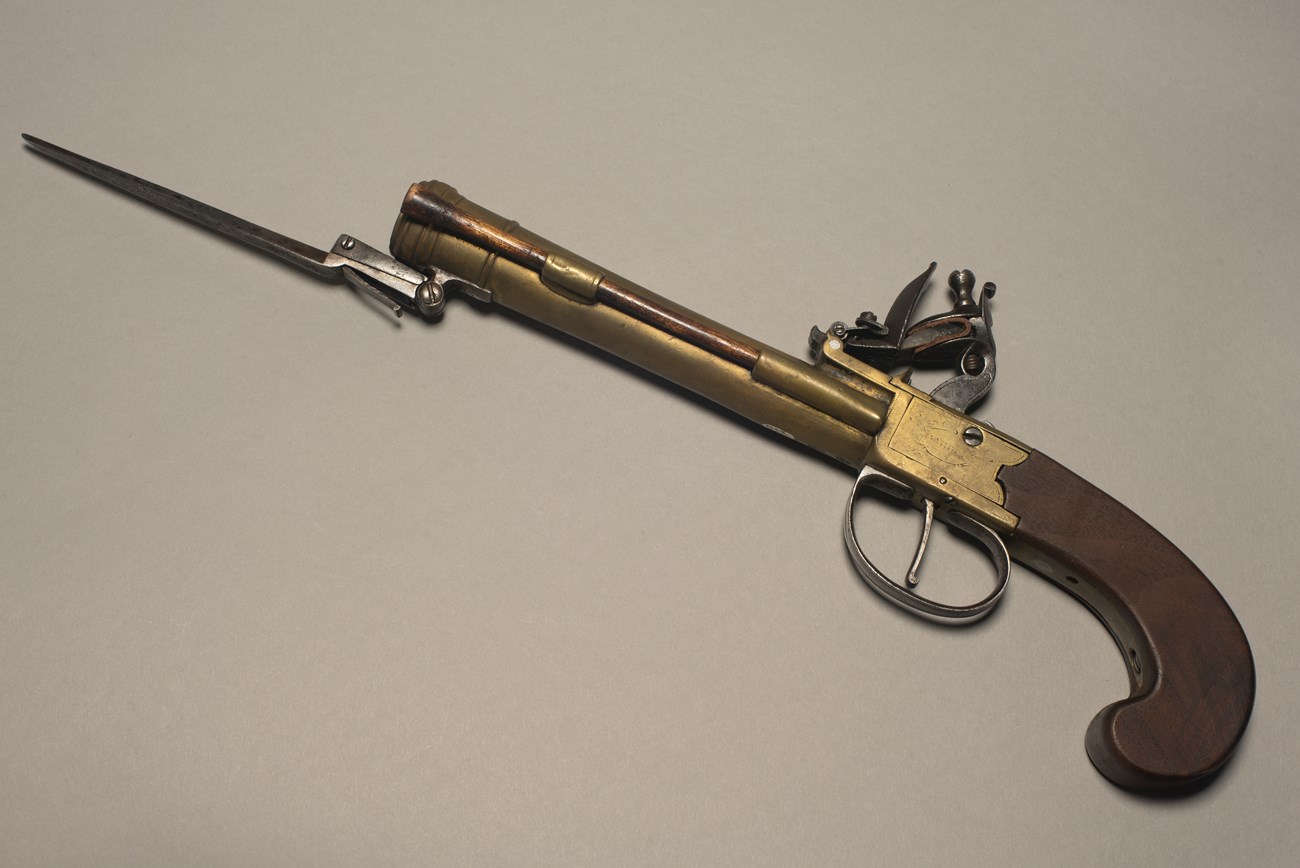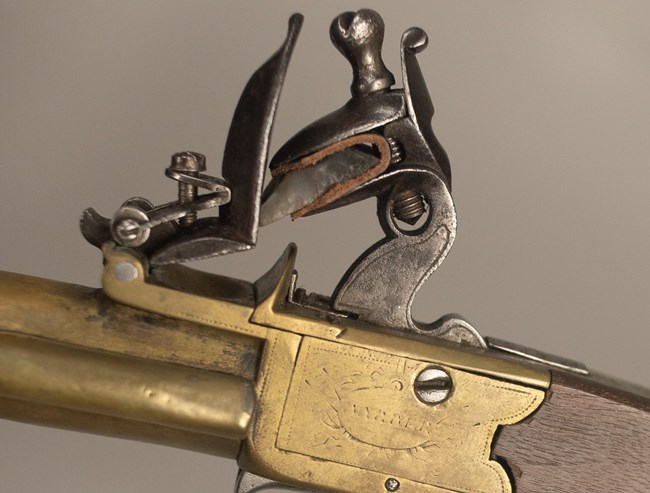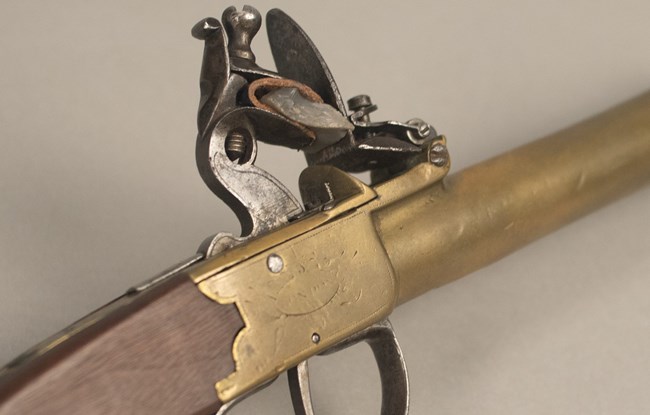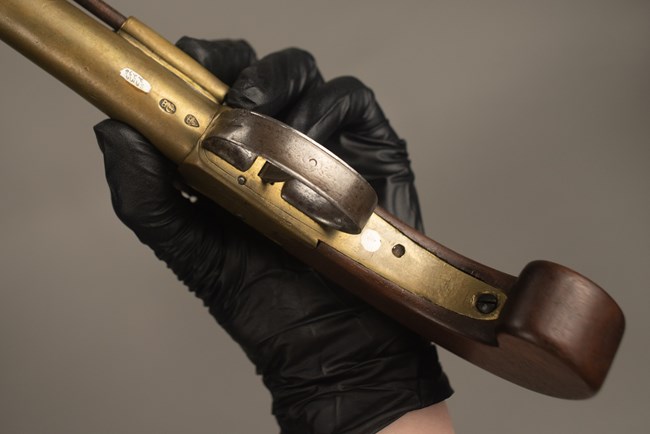Last updated: May 17, 2021
Article
Boarding Pistol or Bayonet Pistol

NPS Photo / Claire Norton
This object in the collection of Salem Maritime is a brass, cannon barrel, boxlock flintlock pistol. It is approximately 11½ inches in length overall, 3½ inches in height, with a 6-inch barrel. Attached on the underside of the barrel near the muzzle is a spring bayonet, with a 4¼ inch blade. This piece was acquired by the park in 1974 from the collection of Gettysburg National Military Park, as a representative of a style of pistol utilized on Salem merchant vessels.
Combining a firearm and a bladed weapon is an idea that goes back to the 16th century, but the addition of a spring-loaded blade to various flintlock firearms began in the mid-to-late 18th century. They reached their peak of popularity around 1800. The hinged blade, fitted with a spring, folded back along the barrel of the gun and rested against the front of the trigger guard. After firing the pistol, pulling back on the sliding trigger guard released the bayonet into a forward position for use in hand-to-hand fighting., much like a switchblade. This is the type of gun that a Salem captain or officer might purchase, particularly if they were on a privateer during the American Revolution or War of 1812.

NPS Photo / Claire Norton
This type of pistol is a version of what English firearm historian John Nigel George referred to as a “boarding pistol,” ideal for use in close quarter, hand-to-hand combat situations by men at sea. The brass barrel and boxlock, which housed the flintlock mechanism on the interior of the firearm rather than mounted on the side, would have been ideal in the high salt environment of the open ocean to avoid rust. This particular design was an inexpensive, but quality made item, patented in 1781 by Birmingham, England gunsmith John Waters (active 1766-1788). The grip has a less finished look compared to other pocket pistols of the period, but comparison with other extant pistols shows it was standard for this type of weapon. If it is not original, it is a faithful replacement of the original stock. For a video on how a flintlock weapon works, visit Minute Man National Historic Site.

NPS Photo / Claire Norton
Clues to the origin and maker can be found on either side of the boxlock. While severely worn, each side can be determined to have an ellipse containing words and surrounded by an engraved design depicting flags, drums, and arrow quivers. The words within the ellipses are nearly worn away entirely but can still be confidently deciphered. ‘London,’ on the right side of the pistol, coincides with the London proof marks on the underside of the barrel. Many other examples of guns of this design type exist from the early eighteenth century and bear the same proof marks and ‘London’ on the side of the lock. However, like many others, this was not likely created in London but rather for the London gun trade. On the other side of the lock can be made out the name ‘Barber.’

NPS Photo / Claire Norton
The record of gunsmiths in this period reveals the likeliest identity of this maker to be Isaac Barber of Newark, Nottinghamshire (1750-1823). Barber was active alone from 1773 until 1804, when he went into partnership with Joseph Boaler. They continued as “Barber and Boaler” until 1819, when the London Gazette reported the dissolution of his partnership. Examples of their mutual workshop can be found bearing ‘Barber & Boaler,’ and while some mark their origin as ‘Newark,’ many examples like that of the piece in the Salem Maritime collection are marked ‘London.’ Given that the pistol only bears Isaac Barber’s name, and the popularity of this precise type of weapon around the turn of the century, it is plausible to assume that it was created sometime between 1780 and 1804.
Sean Palmatier, Ph.D. Student
Department of History, Northeastern University
Bailey, Dewitt; Douglas A. Nie. English Gunmakers: The Birmingham Gun Trade in the Eighteenth and Nineteenth Century (New York: Arco Publishing, 1978).
Advertisements, The London Gazette, 6 April 1819, Issue 17466, Page 616.
